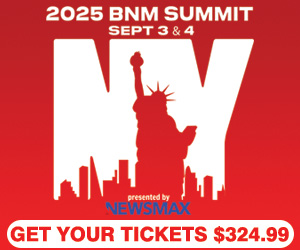As festivities surrounding NBA All-Star Weekend in San Francisco, Calif. take place this weekend, national viewership of games around the league this season are down 5% compared to the previous year. Even though February viewership is up by double digits from January and the league had a record-setting Christmas Day slate of games airing on ESPN platforms, the league has faced industry headwinds related to cable television and cord cutting. Ratings on TNT have fallen by 14% on the year, according to data from Nielsen Media Research, while those on ESPN and ABC are either close to or nearly flat from last season. Yet John Skipper, former president of ESPN and co-founder of Meadowlark Media, explained that these ratings diminutions do not necessarily equate in significance to the future of game broadcasts
The NBA recently announced 11-year media rights deals with The Walt Disney Company, Comcast and Amazon reportedly worth a total of $77 billion. Skipper was at the helm when ESPN signed its existing media rights deal with the league, which is said to be worth $1.4 billion per annum over nine years. The company is now preparing to pay a reported $2.62 billion per year for a package of games that includes prime time broadcasts, Christmas Day rights, select playoff contests and the NBA Finals.
“They are ascendant, and the deals they just did are much, much more important than whatever the regular-season ratings are,” Skipper said on the latest edition of The Sporting Class. “We’re back to people thinking the ratings are some dramatic indication of the health of the league.”
Even though Skipper acknowledges that NBA commissioner Adam Silver will need to answer questions surrounding the ratings, he does not feel that the fluctuation on particular days is that relevant. David Samson, former president of the Miami Marlins, opined that he believes what concerns the league is the state of the game and the product it is ultimately offering to its consumers and clients.
“The NBA, to me, has a game quality problem, and it also is trying to figure out who’s next after LeBron, and the whole LeBron going to Luka on the Lakers as sort of a small sample of what the NBA may look like going forward,” Samson said. “Is Luka the person they want? Is it an international player – is it Wemby? How are they going to navigate a world without LeBron the way they did without Jordan? It’s interesting.”
Pablo Torre surmised that the shocking trade of Luka Dončić to the Los Angeles Lakers could serve as an instructive module delineating the conspicuous strengths and weaknesses of the league. The three-team transaction, he explained, presumably led everybody to talk about what had happened as the lead-up to Super Bowl LIX between the Kansas City Chiefs and Philadelphia Eagles was happening. Torre added that he felt the drama surrounding the NBA and level of cultural currency has not been reflected in actually watching the product and the games.
This led Skipper to compare the NBA to the NFL, pointing out the stark difference in the amount of playoff games and repeated consumption. Samson replied by reminding Skipper that he was someone at ESPN who was known for paying to augment the value of a specific package. Skipper confirmed that they would want as many rounds in the playoffs as possible since the postseason games were more valuable in accruing viewership as the championship approaches.
“It probably is more acute with the NBA, meaning that the playoff games drive a larger percentage of the value than the NFL postseason would, so yeah, we wanted to press, and the league has responded,” Skipper said. “They understand, and what Adam did, of course with the In-Season Tournament, is he needs to figure out, and Christmas Day and he’s experimenting this year with the All-Star format, he needs to figure out ways to make more of the huge quantity of games they play stand out in some way.”
Silver recently divulged that he would be a fan of shortening the game by eight minutes through instituting four 10-minute quarters. With NBA games running approximately two hours and 15 minutes this season, which is nearly consistent with the past 15 seasons, keeping the game to two hours for broadcast purposes is something that could benefit media partners. Skipper acknowledged that this is not a big problem for ESPN as much as it is for NBC since the network is trying to air local news programs on time as well.
“I would change the amount of timeouts and I would change what happens at the end of the game,” Skipper said. “They got to figure out a way – it’s worse in college basketball – you got to figure out a way that the last minute and 12 seconds doesn’t take 16 minutes to play.”
Barrett Media produces daily content on the music, news, and sports media industries. To stay updated, sign up for our newsletters and get the latest information delivered straight to your inbox.




